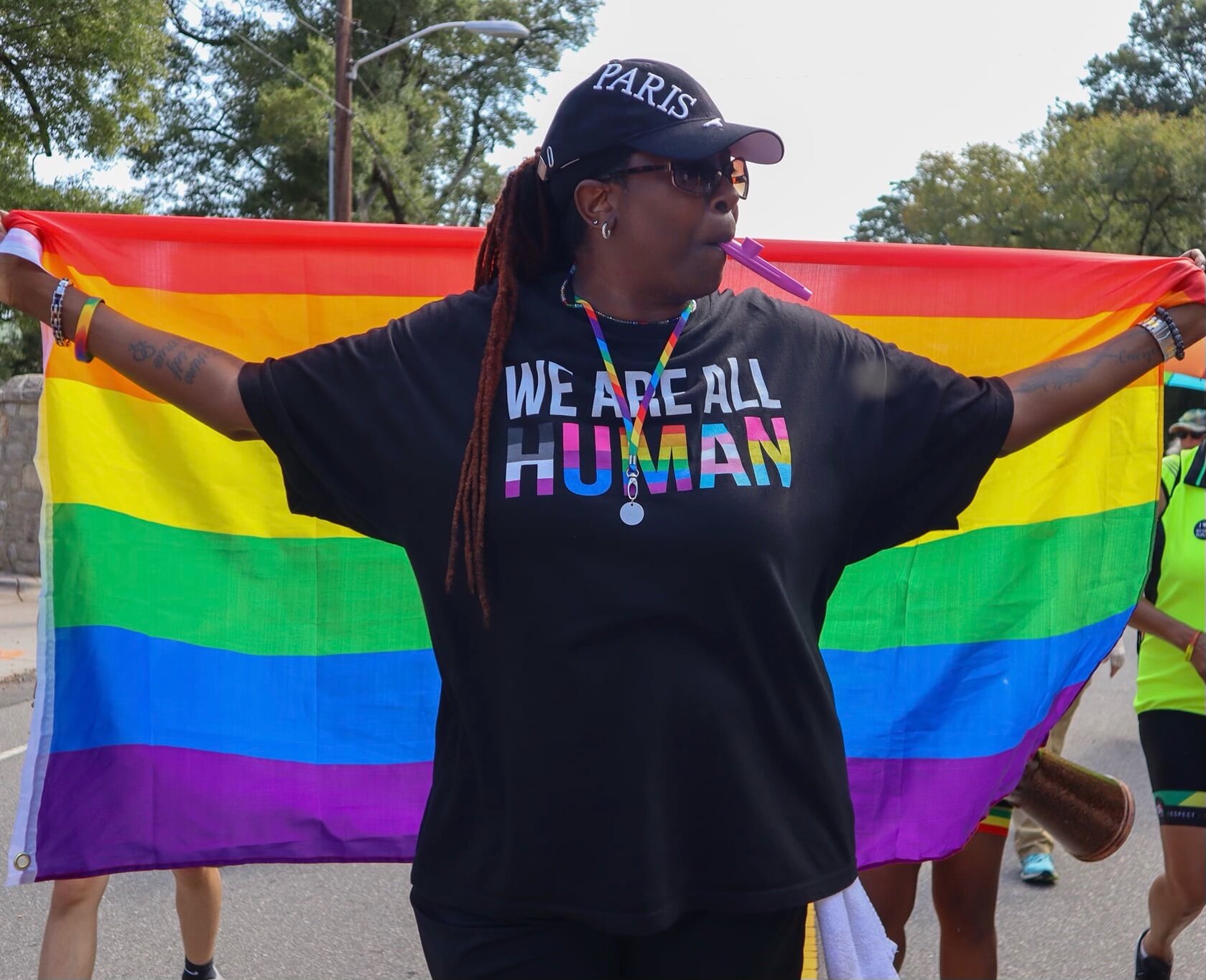
by Claudia Sageser-Kaplan:
My latest project is transcribing/digitizing my mother's letters. For 60+ years she was in a "round robin" with 6 friends from college. (When the fat envelope of 7 letters arrived, you then kept your old letter and wrote a new one to send off to the next person.) The letters are fascinating and revelatory. Today I learned that the first time I stood alone unsupported was with the playing of The Star Spangled Banner at the (televised) first inauguration of President Eisenhower! I was nearly 11 months old. One could read so many different things into this, right? Love it. Here I am somewhat later demonstrating my walking skills.

SisterScene Recommends
Curious Readers
Follow this excellent blog: @Frogtroubletimes
Belle Boggs & Beatrice Allen: The Frog Trouble Times is a co-written newsletter featuring essays and nature-focused lessons/tips/observations created by:
author/professor/mother Belle Boggs and Beatrice, her witchy seven-year-old.

Lisa A. Jones, poet
Ibada ya Muziki
Ibada ya Muziki (“Musical Worship” - Swahili)
Hypnotic images sway
as I embrace the way
I feel when I hear those
First silky musical licks.
So sure the vibe’s for only me
But your foot tapping and
finger snapping draw me in;
the universality of speech now
pulsating through.
Hear that mellow, brassy, rhythmic sound;
The syncopation and coordination;
Of tone, of pitch, until at last
we see its vibrant colors
Reaching and stroking,
the fluid notes;
beckon us to slide inside
the damp musician’s skin
intertwining our fingers
and pressing the keys
As though we’ve predetermined
the propulsion soon to follow
The improvisation takes hold
and bebop explodes
Into the tiniest of particles
Filling the cavernous hole
of elation long ago abated;
Seeing a force too heavy
and passion too great
for one person to harness alone,
We wait…..
Holding our breath for the magic
anticipating the wave
as it builds to crest
and release its might upon us
We wait…..
How Devine… Can you taste it?
That delectable morsel is the
sweetest fragment ever formed.
it lays atop our taste buds and
upon the surface of our lips
Breathe deeply, the fragrance of harmony;
Warm and soft, yet cool and strong
weaving its way throughout the essence of our being
Fusing until we are powerful, vital, and
robust as the fingers playing the scales and
creating riffs within this communal space.
Come closer, won’t you sit with me and
we shall ride this whirlwind as one.
Basking in the heat of this unified beat;
all grottos and chasms;
once empty, are filled.
Now supple; their rims overflow
Engulfing us as a silent sunset prayer
ebbs from chants and flows to moans
then groans in a sacred dream of
that which is healing to us all.
Alas triumphant, notes inch and climb along our spine
Releasing that for which we’ve been waiting
Rich and spicy in texture; the blues at last unite us
Blurring and merging our differences until we are one.
L.A. Jones --- 5/16/19
Make-female-synthesis—fluidity
by @Vandana Shah
With all the swirling debate about gender fluidity, I was reminded about a Hindu deity whose representation I started to collect in my early twenties called ArdhNariswara. (Photo below of the only one I managed to acquire, proudly displayed in my home in North Carolina). Ardhanarishvara represents the synthesis of masculine and feminine energies of the universe (Purusha and Prakriti) and illustrates how Shakti, the female principle of God, is inseparable from (or the same as, according to some interpretations) Shiva, the male principle of God, and vice versa. Ardhanarishvara symbolizes that the male and female principles are inseparable.
Even though I am on the fringes of this debate, since I am often asked to choose my gender on various zoom calls, I begin to think that perhaps ArdhNariswara can help us provide a new perspective. Hinduism has always recognized each of us as a synthesis of male and female physical and non-physical attributes, and challenges dualistic thinking. Sanskrit grammar has a ‘third gender’ or gender-neutral option for verb declensions. Gender identification is easier when the physical and non-physical attributes align in an individual as either male or female. But where there is dissonance between the physical and non-physical attributes, the individual who in modern times we call non-gender conforming, transgender, or any such term, may go through an intense internal struggle and may choose to bring those in alignment. Scientific development gives people the opportunity to align the physical self with the non physical attributes to achieve alignment through surgery and hormone therapy.
Vandana’s story and statue (pictured above):
Prior to these developments, most cultures, including pre-colonial India, accepted a spectrum of gender representations, behaviors, and identities. There was little anxiety about or insistence on specific attributes or behaviors for specific genders, and easier acceptance of a spectrum of sex and gender identities and behaviors instead of insistence on dualities or binaries. Technical point: 'sex' refers to biological attributes, and 'gender' to the behaviors associated with those attributes. There is and has always been a spectrum on both dimensions, not rigid and mutually exclusive binaries. Social and cultural customs dictate what behaviors can go with what genders, and are thus subject to change. Men in so many ancient cultures had long hair, wore feminine clothing, jewelry and even make up!
Pre-colonial Indian cultures accepted exaggerated female behaviors in people categorized as “male” - so artistic representations of male Hindu deities typically have androgynous forms, specifically capturing their universality and non-binary nature. Exaggeratedly powerful masculine figures (large mustaches! big muscles!) are those of the Asuras or demons, who are strong but flawed beings with many positive attributes but who lack balance and control. The Indian mythology scholar and writer Devdutt Patnaik has written extensively and accessibly about gender fluid figures in Indian traditional stories, from Shikhandi in the Mahabharata to folk tales from every corner of India.
I wanted to share my ancient Hindu deity that fascinated me 30 years ago to my friends struggling with the notion that gender fluidity/neutrality and sex/gender transformations are new age and/or immoral or break with cultural or religious traditions. If we delve deeper we will realize that they have always been there and we had cultural and religious belief systems that helped us better understand and accept these from a spiritual and practical perspective. @ Sister Scene Creative Justice Community
Queen’s Gambit Review by Marie Cox-McMahon
Stop and think next time, Netflix
Watching and enjoying television shows and movies has made life in quarantine, for me, worth living. Here are some of the things I have seen, would recommend, and love to talk about. My first choice is the Queen’s Gambit, a rollercoaster of emotions, challenges and wardrobe. After a quick google search and to my disappointment but not surprise, I discovered it was written and directed by white men, and suddenly my mind wandered to the missing pieces, the polished edges that I yearned so much for. The show, although fantastic as evidenced by my recommendation, fell short.
The relationship between Beth and Jolene was my favorite part of the story, but it was an interesting lesson that she becomes a radical and then shortafter intends on marrying a rich white man saying “fuck them if they can’t take a joke.” Jolene seemed to be our historical marker, in the beginning she experienced racism, but at the end she is above that and even now being catered to by a white guy. It creates a sort of strange full-circle of surface level acknowledgement of “history” while saying nothing about what was really going on. There is an understanding of discrimination and oppression brought up in the first episode and not referenced until the last. Beth had her own white-feminist issues to worry about, but that also, by the finale seemed to become all-but irrelevant.
The nerdy men doubted her but there was nothing they could do to stop her as long as she had money to enter tournaments. The oppression faced by Beth and Jolene is profoundly different. Beth is welcomed into the chess world while Jolene is objectified in her Law office. I suppose what I am most upset by is one of the final scenes with Beth and Jolene in Jolene’s gorgeous new car (given by the white Lawyer courting her). Jolene goes on about how she wants to change the world and she can’t do that as a paralegal. Beth sits quietly with a knowing smile on her face with no intention of helping. She will continue to be a Chess champion and that is fine because she is a white woman and feels no responsibility toward the movement.
I’m starting to feel neo-liberal ranting now and I want to make clear that the show was amazing, I just think they should have left the issue out, or fully integrated it so it did not feel so out of place to suddenly acknowledge the Civil Rights Movement. I hate the feeling that Netflix executives and producers are watching the news and public opinion polls and following closely along to decide what to include or exclude. Rich people insulated from the real events of the world just using our struggle for attention and acclaim. I want art that is Organic and True, not with pandering scenes to cover the ass of White Male Production.
Dear Sisterscene Readers,
We want your opinion about books, shows, podcasts, music, films and events. The voice of women and girls need to be heard. Consider things you love and the way they make you happy, fulfill you, get you fired up! How could fascinating content be even better? Your ideas matter!
Lelaina Romero, Music Educator and Healer, Mother
You are invited to follow my page "SoloCantarSpace" and click the link below to share my story about honoring my father’s memory and community healing with sing-along youtube video instruction and a collaboration with musicians and artists (while promoting ALS research). Sólo Cantar is a space and community celebrating the healing power of music. Our first event will be a show at the PSI Theatre, Durham Arts Council, on 4/30/22, benefitting the ALS Association, NC Chapter. Created by LeLaina Romero honoring her dad Luis.




